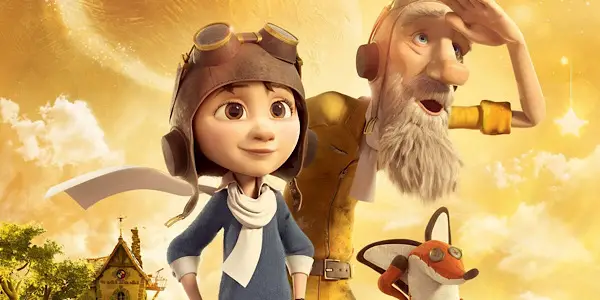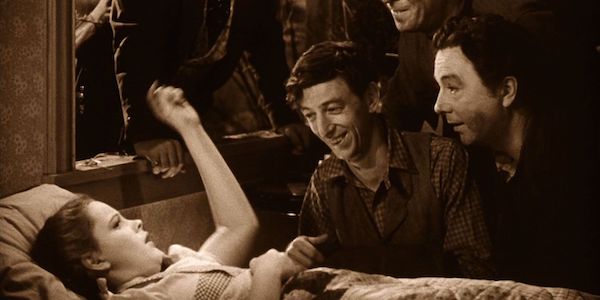All A Dream: Brushing Off Children’s Fantasy

Frances is a graduate of film and digital media from…
An odd phenomenon I have noticed in children’s fantasy films — a large presence in many young people’s lives — is the dismissiveness of such films toward their own content. This type of film involves a child adventurer entertaining various heroics in a fantasy land, returning home, and waking up, realizing the fantasy was really only in their imagination and learning a valuable lesson. This story arc undermines children’s agency, imagination, and wavers uncomfortably about its own content.
This is not a new phenomenon in film. But there are some puzzling features that merit a closer look. Several major examples of these films are based on children’s books and are faithful to the source material until the ending. So why are they changed? And who started it?
The History
Two incredibly popular children’s fantasy films, The Wizard of Oz and Alice in Wonderland, differ significantly from their literary source material. They both feature young women protagonists who fall into a magical world, overcome various obstacles, develop as people, and eventually go home (in both cases, later to return). And each film decided, after the conclusion of these fantastical adventures, that the young women would instead wake up in their homes, comforted from a surely hysterical illusion by their families.
Peter Pan, released just after Alice in Wonderland, follows an almost identical script — after Wendy and her siblings return from their adventures, it turns out that no time has passed and Wendy is woken from a nap by her parents. And again, this differs from the novel, where Wendy and her siblings return from their very real voyage to distraught parents who have been looking for them for days.
These changes from novel to film may have been to appease mainstream audiences in an earlier era, but I don’t know if I buy that. Three big-budget films making the same changes against their original works? Georges Méliès, Alice Guy-Blaché, and many other early filmmakers made fantastical narratives with no sense of obligation to reframe them into reality. Even Disney’s early hits feature talking animals and unbelievable slapstick, and these were perfectly palatable to a wide audience.
Momentarily setting aside the filmmakers’ intentions, The Wizard of Oz and Alice in Wonderland took two of the literature’s prominent young heroines and reduced them to silly daydreamers, able to dream of excitement and heroism but incapable of leaving behind their domestic lives, both satisfying and besides inescapable. Peter Pan reduced a wild adventure to the vivid dreams of three children, denied by their parents and by the film itself.
The Legacy
Since these first momentous examples, it seems that many children’s films — even if they don’t outright say their adventure was a dream — are obligated to imply at the very least that the entire escapade may have been imaginary. Films intended for adults are often guilty of this as well (see: Inception), choosing to remain ambiguous about their own tone while splitting the lane between optimism and pessimism. However, the phenomenon appears particularly striking in children’s media.
One notable example, and a favorite film of mine for some time, is The Little Prince. This lovely family movie, released in 2015, is based on the children’s book of the same name, in which a young prince from a very small asteroid travels among whimsical planets and characters. The film reframes this narrative as a story told to a young girl by a kindly old man.
Throughout it, the imaginative descriptions and illustrations of the book are brought to life faithfully. At the climax of the film, the young girl travels among these planets herself, explores, and meets the little prince. When she returns home, it turns out that it was all actually a metaphor, with the film sympathetic but ambivalent to the status of the old man’s sanity.
The Return Home
A common principle of writing is that at the end of the story, the character(s) must return to where they started, similar yet irrevocably changed. On the surface, an ending where a protagonist wakes up from a dream, or a climax that was all really imaginary, seems like the paragon of this idea. But it is also the easiest — and potentially laziest — way to explain a plot. There is no obligation to explain plot inconsistencies or discrepancies if everything was fake all along, nor is there as high a premium on realistic characterization.

At least in my estimation, “all a dream” is a very weak example of the return of the protagonist. Yes, they may have matured or developed their character, but for what? The equivalent of reading a self-help book? When a character has spent days, weeks, or even years growing and changing the people around them, shaping their new reality into a better one, and the filmmaker sweeps it aside in the literal blink of an eye — I would imagine the sense of loss to far outweigh any symbolic significance. The closure of never-having-existed is both complete and meaningless.
Nostalgia and Betrayal
On their own, none of these films are exactly insidious, but together they present a perplexing pattern. Each was based on a book, and each of these books was more sold on its own reality than its corresponding film. Why do films like this feel a need to reframe their original content into a contemporary reality? Is it perhaps comforting for children to see their adventurers return to an unchanged home after exploring distant and frightening lands? Is it more relatable to watch a character wake up from a fantastical dream than exist in one?
If the goal is to be relatable, this is an awfully pushy way to go about it. Instead of the subtle emotional takeaways that come from audience involvement in a story, we are told directly what to feel and learn by proxy of the main character. Instead of an audience taking a lesson away from the adventures in a story, the very characters in that story learn them. This seems to me like a roundabout violation of “show don’t tell,” and similarly mistrusts the audience.

So is it instead comforting, or grounding, for children to see this? Speaking as a former child, no, or at least not universally. In fact, it was fairly crushing to become invested in heroes and worlds — aware of their unreality but suspending disbelief — only to find that even if I pretended the movie was real, the fantasy was still impossible. I find it quite odd that such films are so removed from their own cores that they need to falsify them twice.
Perhaps the reframing is used to lessen the sense of ennui we adults feel when faced with an impossible, idyllic world which we will never access. Are we attempting to shield children from that same sad nostalgia through an assurance of its impossibility? Are we jealous of their ability to conceptualize fantasy as “real,” and therefore must wrest it from their imaginations before it takes root?
Well, probably not. But in my frustration, I am trying and failing to find a reason for this trope. It almost seems like earth, our reality, is perceived as an untouchable zone; fantasy worlds can exist far outside in the universe, self-contained, but earth cannot overlap with them. There is a claim of deniability on our planet that is perhaps necessary to lure skeptics or pessimists into the theater, to allow the belief that even in film, reality is reality and nothing more.
Films often state their deniability upfront, hinting “it was all a dream… or was it?” This is even worse than plainly explaining the fantasy away. This tries to appeal to both romantics and realists, attempting to let the fantasy live while simultaneously winking at the skeptics in the room. By allowing it to exist as a glimmer of a daydream, children are afforded hope without reward.
Believing Your Audience
When dream-fantasies conceptualize themselves into coping mechanisms for a troubled, bored, or depressed character, the entire tone of the film changes from fantastical to fairly dark. In these films, the fantasy world is imagined by a child protagonist, who is then invalidated by the medium itself. Somehow, it doesn’t seem quite right that films showing the ultimate falsehood of children’s perspectives are the epitome of children’s media.
Instead, allowing children to see themselves existing and adventuring in fantastical worlds affirms their agency in media and in their own minds. It’s been done successfully, as films like Mary Poppins and Enchanted demonstrate. All that is necessary is for the storyteller to trust children’s perspectives. In my experience, this occurs far more often in literature than in film — but it doesn’t have to be that way.
There is nothing more charming than a fantasy completely sold on itself. It is fully possible for a children’s film to be wildly successful while, like its literary parallels, allowing more to exist in reality than we think. It’s easy enough — trust children, see through their eyes, and honor their imaginations.
What were your favorite fantasies as a child? How do you feel about this type of ending? Let us know in the comments!
Does content like this matter to you?
Become a Member and support film journalism. Unlock access to all of Film Inquiry`s great articles. Join a community of like-minded readers who are passionate about cinema - get access to our private members Network, give back to independent filmmakers, and more.
Frances is a graduate of film and digital media from California. She enjoys watching and expounding theories on cinema, especially when experimental or directed by women. In her spare time she enjoys reading short stories and writing queer fantasy.













